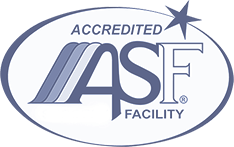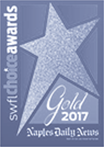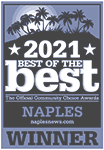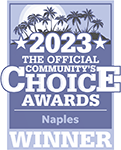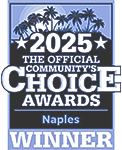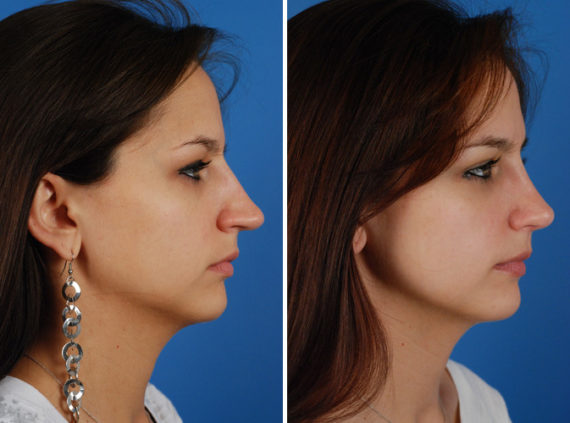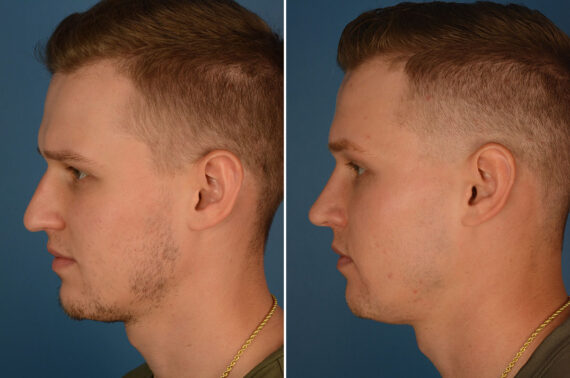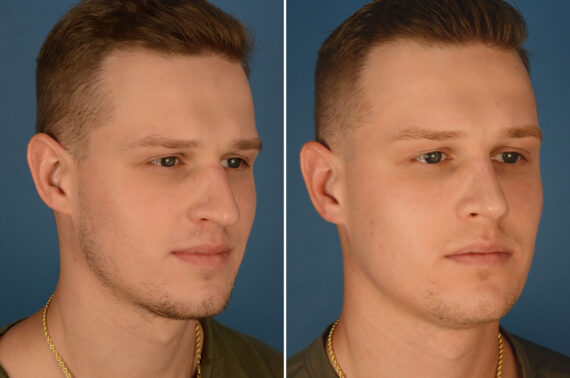Benefits and Beauty Through Rhinoplasty
Rhinoplasty is a surgical procedure that can help patients achieve their desired facial aesthetics. At Aesthetic Surgery Center in Naples, FL, our experienced surgeons have the skills and techniques to reshape a nose for improved symmetry, proportion, and overall beauty. They offer advanced surgical techniques, such as precise cartilage grafts, to provide patients with individualized results in our state-of-the-art surgical facility. Whether you need a minor correction or major repair to your current nasal features, our team is here to help you achieve the best possible outcome.
Our Achievements
What is Rhinoplasty?
Rhinoplasty, also known as a ‘nose job’, is a surgical procedure that can reshape the nasal structure in order to improve the appearance and/or function of the nose. During the procedure, the surgeon can either remove or rearrange nasal cartilage and bone in order to alter the shape of the nose. In addition to cosmetic purposes, functional rhinoplasty may be used to reduce scar tissue in the interior of your nose, correct issues with your nose such as a dorsal hump, wide nose, or deviated septum, and improve your breathing. Following an initial consultation with one of our specialist double board-certified facial plastic surgeons at the Aesthetic Surgery Center of Naples, FL, we will develop a personalized treatment plan for you, which may involve an outpatient procedure.
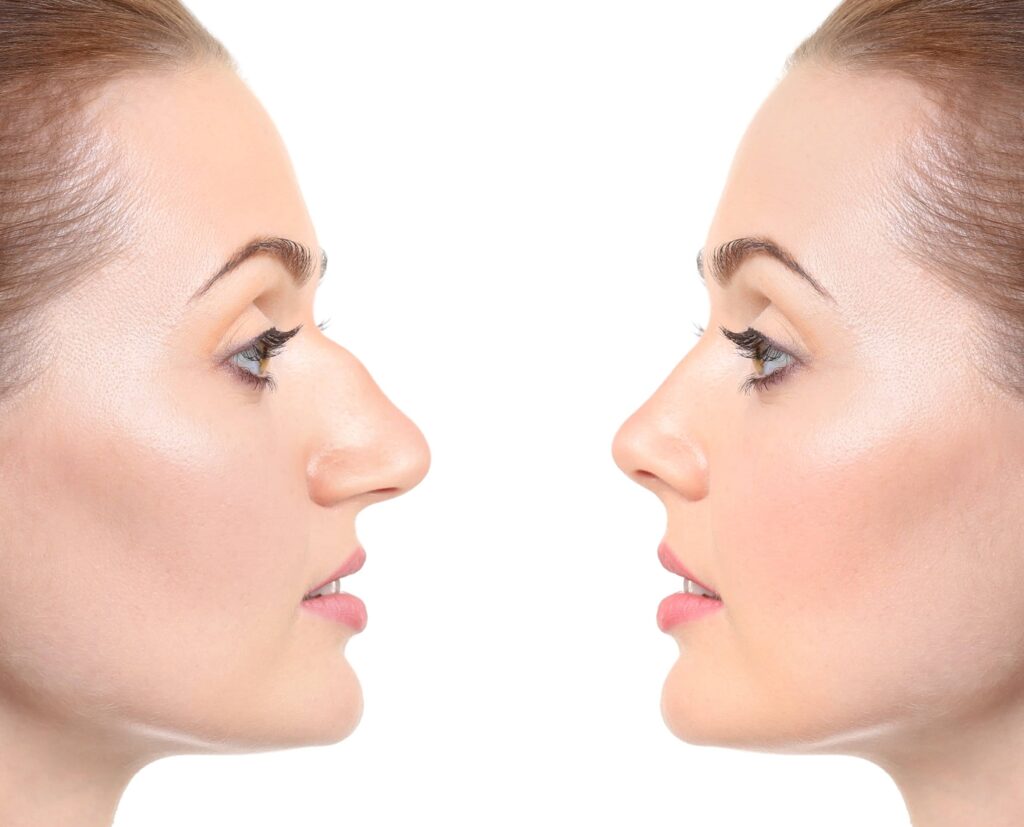
Finesse Rhinoplasty technique
This technique corrects deformities, improves function, and enhances appearance, making it ideal for addressing various nose concerns, including functional issues. Our experts at the Aesthetic Surgery Center utilize precision tools like the Piezosurgery ultrasonic device for bone contouring to minimize discomfort and reduce healing time, resulting in a favorable surgical outcome. While the majority of post-operative swelling takes a few months to resolve, the full aesthetic outcome may take about a year to become apparent due to the gradual reduction of the residual more minor swelling. Rhinoplasty operations focus on both the functional and aesthetic aspects of the nasal passages, ensuring a comprehensive improvement in form and function.
Who Can Get Rhinoplasty?
To be eligible for rhinoplasty, candidates should have completed their facial growth, which typically occurs around the age of 16 for females and 18 for males. This is particularly relevant in male rhinoplasty, where the structure of the male nose reaches its full development at this age. They should have a clear understanding of their aesthetic goals, including the changes they want to achieve through rhinoplasty.
In addition to these qualifications, candidates need to undergo a thorough rhinoplasty consultation with one of our board-certified facial plastic surgeons, who specializes in primary and revision rhinoplasty surgery. These surgeries are amongst the most complex cosmetic procedures performed on the face.
How to Prepare for Rhinoplasty
Preparing for a rhinoplasty is a crucial step toward ensuring a successful outcome and a smooth recovery. The preparation phase typically begins with a comprehensive one-on-one consultation with the rhinoplasty surgeon. During this meeting, the surgeon will evaluate your nasal structure and discuss your aesthetic concerns and goals. It’s important to be open and honest about your medical history, any medications you are taking, and your lifestyle habits, as these can all impact the surgery and recovery process.
Key preparation steps before nose surgery include:
- Medical Evaluation: Obtain medical clearance from your primary care physician, especially if you have underlying health conditions. This may involve blood tests or other diagnostic procedures to ensure you are fit for surgery.
- Medication Management: Discuss any medications or supplements you are currently taking with your surgeon. Certain medications, like aspirin or anti-inflammatory drugs, can increase bleeding risk and may need to be discontinued before surgery.
- Lifestyle Adjustments: If you smoke, you will be advised to quit well in advance of the surgery, as smoking can hinder the healing process. Limiting alcohol consumption is also recommended.
- Post-Surgery Planning: Arrange for someone to drive you home after the procedure and assist you for the first few days of recovery. Ensure you have a comfortable recovery area set up at home, with essentials like pain medication, ice packs, and easy-to-eat foods readily available.
- Diet and Hydration: Focus on maintaining a healthy diet and staying hydrated in the weeks leading up to the surgery. Proper nutrition can aid in a smoother recovery.
- Mental Preparation: Mental and emotional preparation is also important. Have realistic expectations and understand both the potential benefits and limitations of rhinoplasty.
The Consultation for Rhinoplasty in Naples, FL
The consultation is a critical step in the rhinoplasty process. It’s an opportunity for the patient to discuss personal goals and aesthetic concerns with a board-certified facial plastic surgeon. During the consultation, the surgeon will evaluate the nasal structure and facial features, discuss the surgical technique, and develop a customized surgical plan. This is also the time to address any health concerns and to ensure that the patient’s expectations are aligned with what can realistically be achieved.
CALL TODAY TO SCHEDULE YOUR CONSULTATION
Rhinoplasty Recovery
The recovery period after rhinoplasty varies among patients, typically spanning at least six weeks post-surgery. Patients are advised to refrain from strenuous activities, eyeglass usage, or external nasal pressure of any kind during this time to avoid potential injury. To ensure successful healing, it’s crucial to take it easy, allowing the body to recover properly. The duration of healing depends on the individual’s body type and overall health, but by diligently following post-operative instructions, you’ll soon enjoy the results of your rhinoplasty. Key aspects of recovery include:
- Rest and Elevation: Keeping the head elevated, even during sleep, helps reduce swelling.
- Cold Compresses: Applying cold compresses around the nose, not directly on it, can alleviate swelling and discomfort.
- Medication: Taking prescribed pain medication and antibiotics as directed helps manage pain and prevents infection.
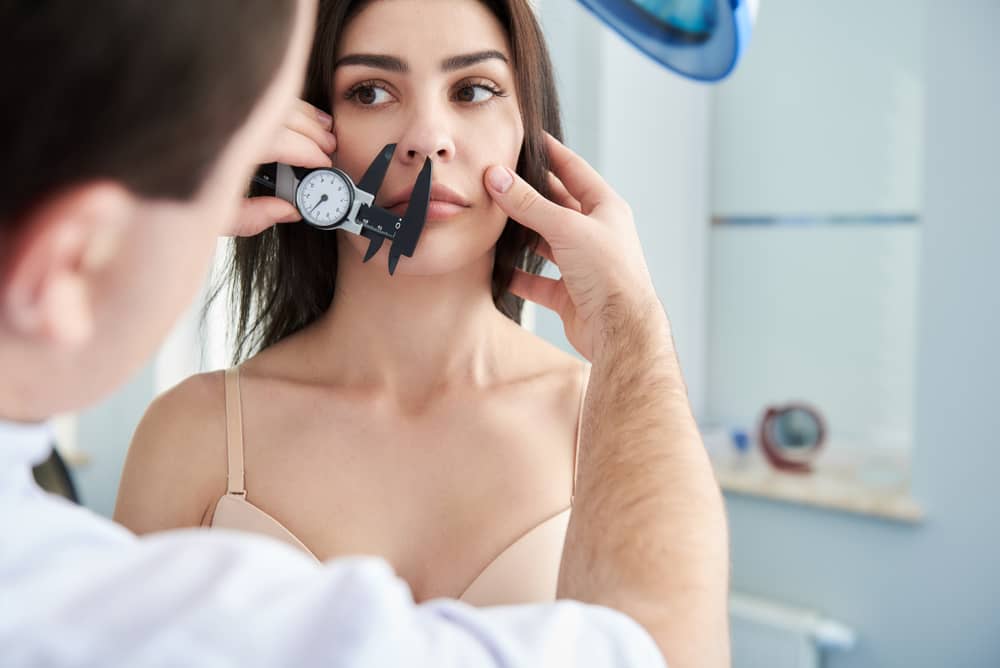
Activity Restrictions: Avoiding strenuous activities, heavy lifting, and intense physical exercise is crucial to prevent bleeding or increased swelling.
The second phase of recovery spans from the third week to about a year after the surgery. During this period, patients will notice a gradual reduction in swelling and the emergence of the final shape of the nose. It’s important to keep in mind that the healing process varies from person to person, and patience is key. Additional guidelines for this phase include:
- Follow-Up Visits: Attending scheduled follow-up appointments allows the surgeon to monitor the healing process and address any concerns.
- Sun Protection: Protecting the nose from direct sunlight is essential to prevent skin damage and discoloration.
- Avoiding Glasses: To prevent indentations, patients should avoid wearing glasses that rest on the bridge of the nose for at least one month after surgery. Exactly when to resume wearing glasses should be discussed with your surgeon.
- Nasal Care: Gentle cleaning and moisturizing of the nasal passages, as recommended by the surgeon, can aid in comfortable healing.
Throughout the recovery period, patients need to maintain open communication with their surgeon and report any unusual symptoms or concerns.
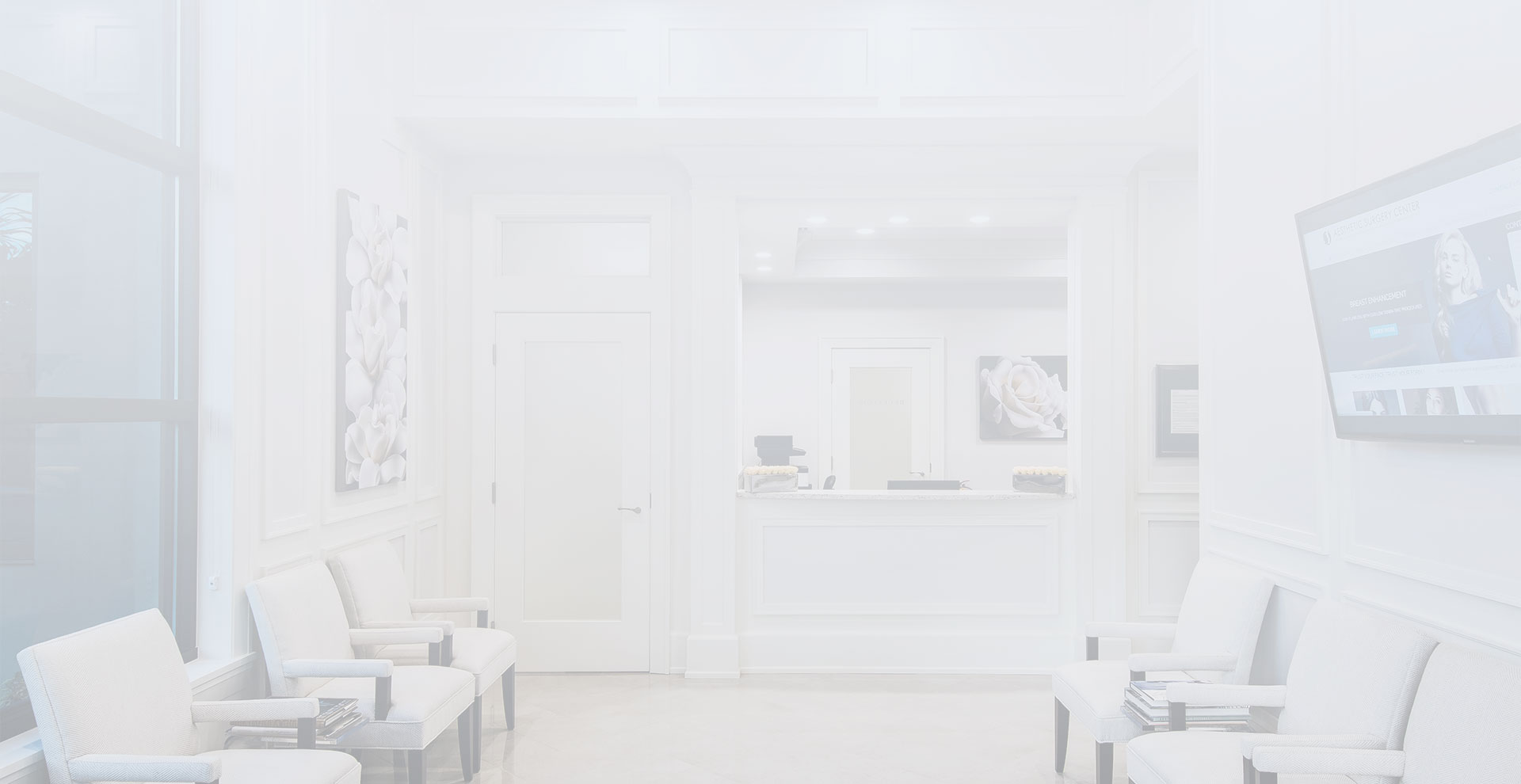
Rhinoplasty Before & After Photos
* Each patient is unique and individual results may vary.
Risks and Complications of Rhinoplasty
Rhinoplasty, like any surgical procedure, carries certain risks and potential side effects that candidates should be aware of. The most common risks include but are not limited to:
- Bleeding: Post-operative bleeding can occur, although it’s usually minor. In rare cases, significant bleeding may require additional medical attention.
- Infection: There’s a small risk of infection at the incision sites. Surgeons typically prescribe antibiotics to mitigate this risk.
- Breathing Difficulties: Some patients may experience temporary or, in rare cases, permanent breathing issues after rhinoplasty. This is often due to changes in the nasal structure.
- Anesthetic Complications: Reactions to anesthesia, though rare, can occur and range from mild to severe.
Additionally, there are side effects specific to the aesthetic outcome and the healing process:
- Dissatisfaction with Aesthetic Outcome: Some patients may not be satisfied with the results. This could be due to unrealistic expectations or unforeseen healing complications.
- Asymmetry or Irregularities: The nose might heal with slight asymmetry or have minor irregularities, which are sometimes correctable with revision rhinoplasty.
- Prolonged Swelling and Bruising: While swelling and bruising are normal, they can sometimes last longer than expected, temporarily impacting the final appearance.
- Scarring: Scars are typically minimal and well-hidden, but their visibility can vary based on the surgical technique and individual healing.
Potential candidates must discuss these risks and side effects in detail with their rhinoplasty surgeon during the consultation.

Rhinoplasty Before & After Photos
* Each patient is unique and individual results may vary.
What is the Cost of a Nose Job?
During your consultation, our surgeons review rhinoplasty recovery time, rhinoplasty risks, approach, expected results, rhinoplasty healing stages, and the entire nose surgery recovery process. After the consultation, you will be provided with the cost of the surgery to review. Rhinoplasty is not a cheap treatment, primarily because it is one of the most technically difficult procedures to perform well in all of facial plastic surgery. There are surgical fees, facility fees, and anesthesia fees. The level of complexity, need for grafts, and time spent are all factored into providing you with an accurate cost for your nose job (the approximate range is $18,000 to $25,000).
Rhinoplasty surgery is one of the most, if not the most, rewarding procedures performed on the face as the results are lasting and life-changing. The nose defines the midline of your face and helps to convey facial symmetry. Let us help you put your best face forward.
Related Procedures: Rhinoplasty, Revision Rhinoplasty, The UpLift Facelift, Endoscopic Mid Facelift Surgery, Eyelid Surgery, Eyebrow Transplant, Chin & Cheek Surgery, Skin Cancer Reconstruction, Hair Transplant Surgery, Surgery of the Ears, Fat Transfer (Fat Grafting), Lip Augmentation, Endoscopic Eyebrow Lift, Scar Revision
Why choose Aesthetic Surgery Center
Dr. Anurag Agarwal, M.D., F.A.C.S.
- Double board-certified facial plastic surgeon by the American Board of Facial Plastic and Reconstructive Surgery and the American Board of Otolaryngology – Head and Neck Surgery.
- Oral examiner and Board of Directors for the American Board of Facial Plastic and Reconstructive Surgery
- Former President of the Florida Society of Facial Plastic and Reconstructive Surgery
- Received his Doctor of Medicine at Philadelphia’s MCP-Hahnemann School of Medicine in 1999 and was elected to the Alpha Omega Alpha Honor Society.
- In 2016, Dr. Agarwal was honored at the annual American Academy of Facial Plastic and Reconstructive Surgery national meeting.
- Board-certified plastic surgeon by the American Board of Plastic Surgery.
- Attended medical school at UNMC (University of Nebraska Medical College).
- Was elected to the Alpha Omega Alpha Honor Society.
- Member of The Aesthetic Society, the Florida Medical Association, and Collier County Medical Society.
- General surgery residency at Loyola University Medical Center in Maywood, IL
- Plastic surgery residency at Cleveland Clinic Florida

